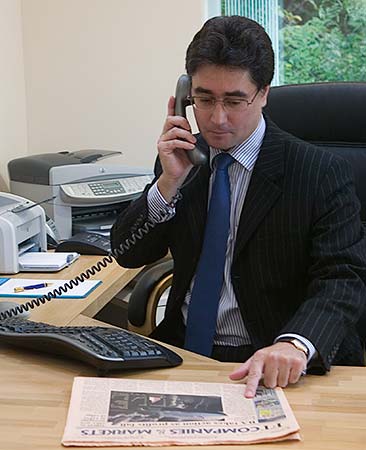- Let’s begin with a thought experiment – Imagine holding up 4 coloured pencils: ‘Blue’; ‘Green’; ‘Red’ and ‘Purple’.
‘Blue’ = MA.1 (i.e. you).
‘Green’ = P.1 (your lay client).
‘Red’ = P.2 (the other party in dispute).
‘Purple’ = P.2’s MA i.e. their Mediation
Advocate (‘MA.2’).
- Since they all have the same rate of acceleration, when simultaneously dropped, they will all arrive at their end destination, i.e. on the ground, at the same time. This is a law of physics.
- However, in Mediation there are no laws of physics.
- Since you (MA.1) cannot know what P.2/MA.2 are actually thinking, and nor can they about what you and P.1 are actually thinking, the outcome of the process is always to an extent uncertain and unpredictable.
- So, how do you as a Mediation Advocate (i.e. MA.1) reduce the uncertainty, i.e. increase the odds of settlement?
- 1st – You prepare yourself and your lay client (i.e. P.1) to negotiate effectively with P.2/MA.2, about terms of a ‘deal’ that both sides can live with, i.e. that is ‘enough’, thereby avoiding the further incurrence of unquantifiable and irrecoverable costs (i.e. litigation risks).
- 2nd – You hook P.2/MA.2 i.e. you irresistibly engage their interest and appetite. You do this by making an ‘interesting offer.’
- P.1/MA.1 can only do ‘2‘ if they have done ‘1‘.
- So, while the outcome in Mediation, unlike a pencil falling to the ground, is to an extent always uncertain and unpredictable, if you and your lay client have prepared to negotiate ‘effectively’, then you increase the chances of ‘doing a deal’ before the end of the Mediation Day.
- That is possible even if P.2/MA.2 have not prepared effectively, and are initially hostile to the process, because one brain is always better than none.
- Your hidden ace is their human nature – i.e. ‘a bird in the hand in litigation is worth more than 2 in the bush!’
- As the Mediator may have said to each side separately in a pre-Mediation Day Zoom call – ‘The outcome of litigation is perhaps even more uncertain and unpredictable than it is in Mediation. That is because a judge will decide and impose the ending. Whereas in Mediation, the parties in dispute will decide how the story ends.’
- So, the outcome in Mediation is more the product of: (i) effective preparation, i.e. planning/calculation; and (ii) skillful negotiation, than it is of luck.
- In Mediation, the possibilities are only limited by the imagination of the participants and their Mediation Advocates.
- Whilst not infinite, in my experience, ‘doable’ deals that ‘are enough’ are invariably possible.
- In the words of the Rolling Stones,
‘You can’t always get what you want
But if you try sometimes, well, you just might find
You get what you need.’
- This requires creative joint-problem solving by all involved in the process.
- In this talk, I will present my ideas about effective preparation and negotiation, i.e. ‘Mediation Advocacy,’ in the creative settlement of a trust/estate dispute.
